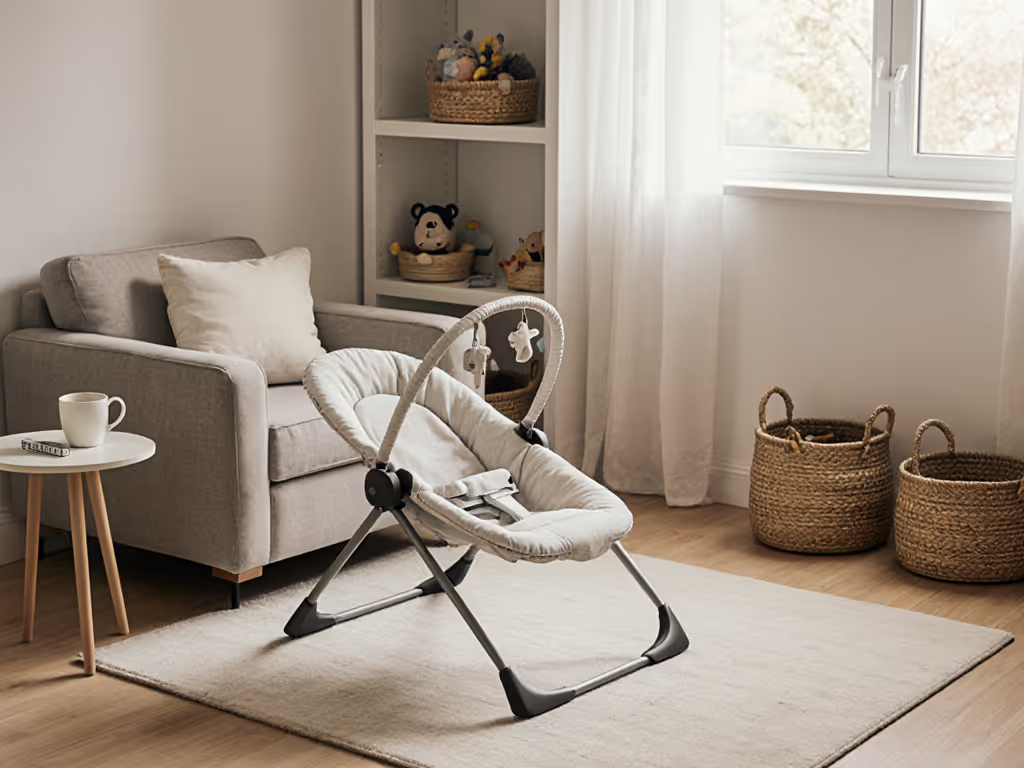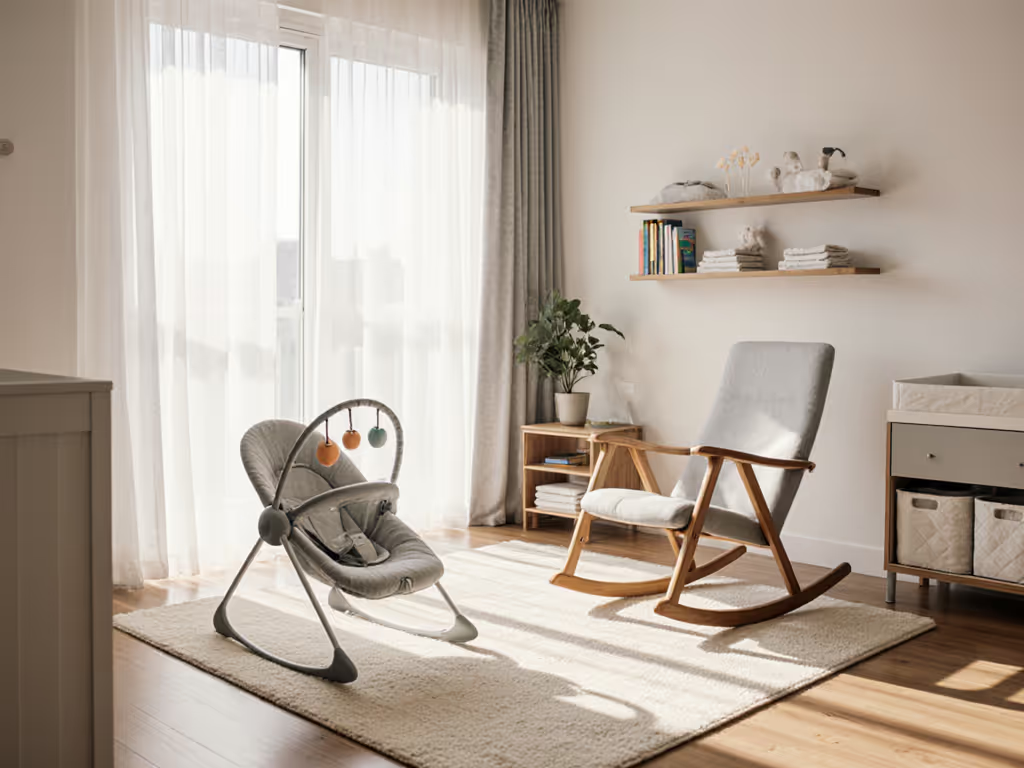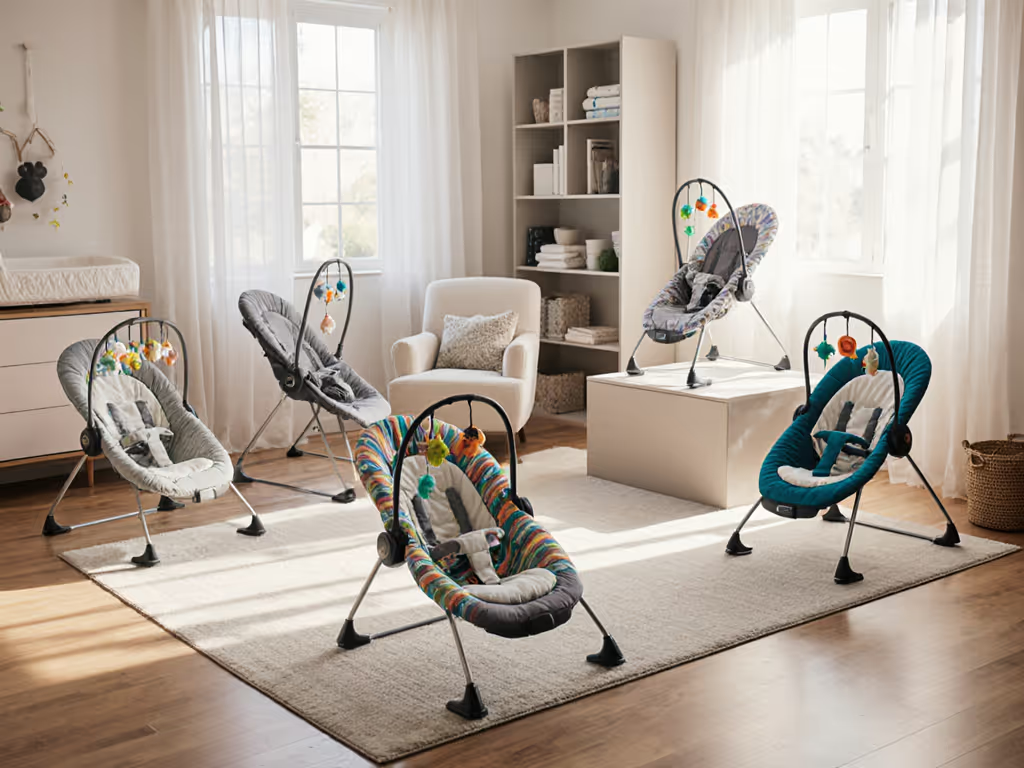
Baby Bouncer Safety Explained: Complete Parent Guide
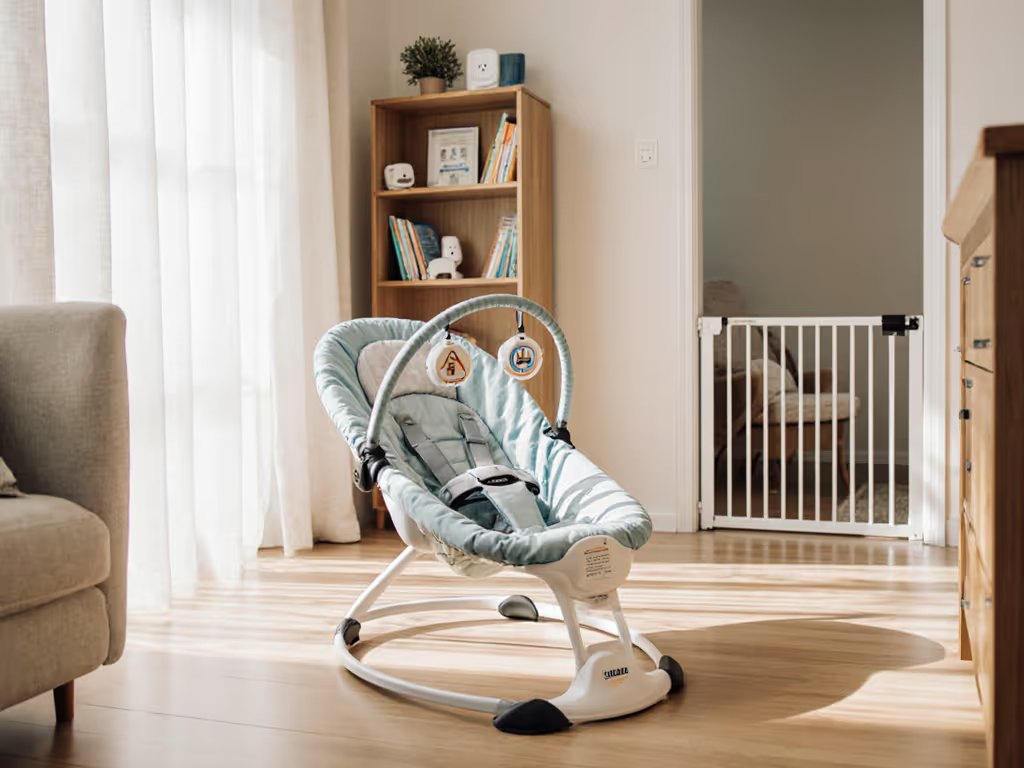
Did you know that more than 8,000 infants are treated for bouncer-related injuries in emergency rooms every year? For parents, choosing and using a baby bouncer safely is about much more than comfort or convenience. Understanding clear safety standards and the right features can make all the difference in preventing accidents and supporting your child's development from day one.
Key Takeaways
| Point | Details |
|---|---|
| Safety Standards | Familiarize yourself with CPSC and ASTM guidelines to ensure bouncers meet safety requirements for your baby's protection. |
| Bouncer Types | Consider the three main types: manual, automated, and convertible, based on your space, baby's needs, and budget. |
| Usage Guidelines | Follow recommended usage timelines and always supervise your baby to prevent accidents and support developmental milestones. |
| Risk Awareness | Be mindful of common hazards like suffocation and falls, and implement prevention strategies to ensure safe bouncer use. |
Defining Baby Bouncer Safety Standards
Ensuring your baby's safety starts with understanding the critical standards governing infant bouncers. In 2018, the Consumer Product Safety Commission (CPSC) implemented mandatory safety guidelines that fundamentally changed how manufacturers design and parents use these essential infant products.
The core safety requirements focus on three primary areas:
- Fall Prevention: Clear warnings must be prominently displayed near the baby's head
- Restraint Systems: Mandatory use of safety straps, even when the infant is sleeping
- Weight and Mobility Limits: Discontinue bouncer use when baby can sit independently or reaches approximately 20 pounds
"Safety isn't just about design. It's about understanding and following guidelines designed to protect your most precious little one." - CPSC Safety Advisor
Moreover, the ASTM F2167-22 standard, adopted in late 2022, provides comprehensive specifications for infant bouncer seat safety. This rigorous framework establishes precise test methods and marking requirements specifically targeting infants up to 6 months old. Manufacturers must now demonstrate their products can withstand normal usage and potential misuse scenarios, ensuring an extra layer of protection for curious and active babies.
Parents should view these standards not as restrictions, but as carefully crafted protective measures designed to create a secure environment for infant development and play.
Types of Baby Bouncers and Their Features
Baby bouncers have evolved significantly, offering parents multiple options to suit different living spaces, baby preferences, and budgetary constraints. Consumer Reports highlights three primary categories that cater to varying parental needs: manual, automated, and convertible models.
The manual bouncer represents the traditional design where baby's own movements or gentle parental nudging create bouncing motion. These lightweight models are typically:
- Lightweight and portable
- Budget-friendly
- Require no batteries or electrical connections
- Perfect for smaller living spaces
Automated bouncers introduce technological sophistication with battery-powered vibration mechanisms. These advanced models offer:
- Consistent rhythmic movements
- Multiple speed settings
- Built-in music or white noise features
- Electronic stimulation to soothe babies
"The right bouncer isn't just a seat. It's a developmental tool that supports your baby's sensory exploration and comfort." - Pediatric Movement Specialist
Convertible bouncers represent the most versatile category, designed to grow with your child. These innovative seats transform from infant bouncers to toddler chairs, providing extended usability. WebMD cautions parents to carefully evaluate design safety, particularly avoiding hanging or door-frame models that pose significant fall risks.
When selecting a bouncer, parents should prioritize safety features, comfort, and adaptability to their specific household dynamics and infant's developmental stage.
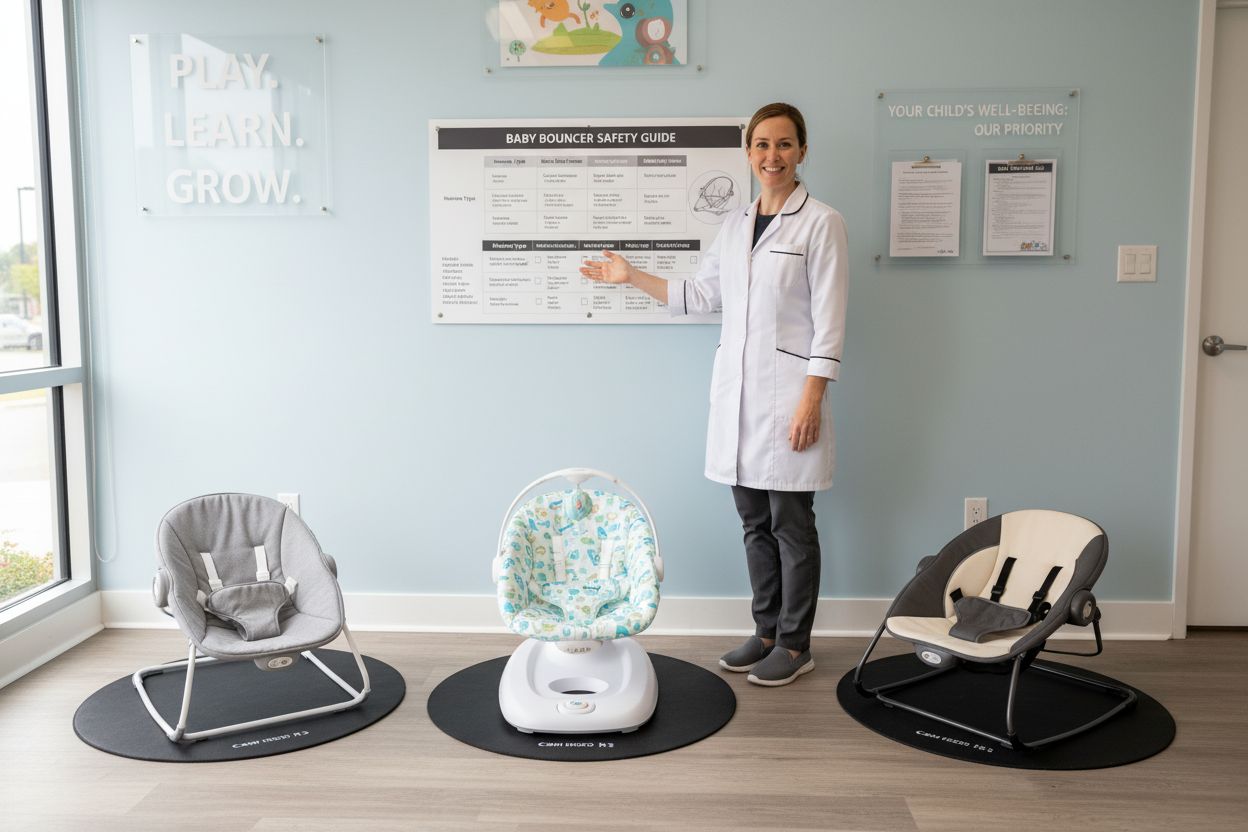
Here's how the main types of baby bouncers compare:
| Feature | Manual Bouncer | Automated Bouncer | Convertible Bouncer |
|---|---|---|---|
| Motion Source | Baby/Parental movement | Battery-powered vibration | Varies<br>(manual & electric) |
| Portability | Lightweight<br>Easy to carry | Heavier<br>Less portable | Moderate |
| Cost Range | Budget-friendly | Mid to high | Higher |
| Features | No electronics<br>Simple design | Variable speeds<br>Music/white noise | Converts to toddler chair |
| Ideal For | Small spaces<br>Travel | Consistent soothing<br>Hands-free use | Long-term use<br>Adaptability |
Proper Usage Guidelines and Age Recommendations
Understanding age-appropriate bouncer usage is critical for ensuring your baby's safety and developmental well-being.
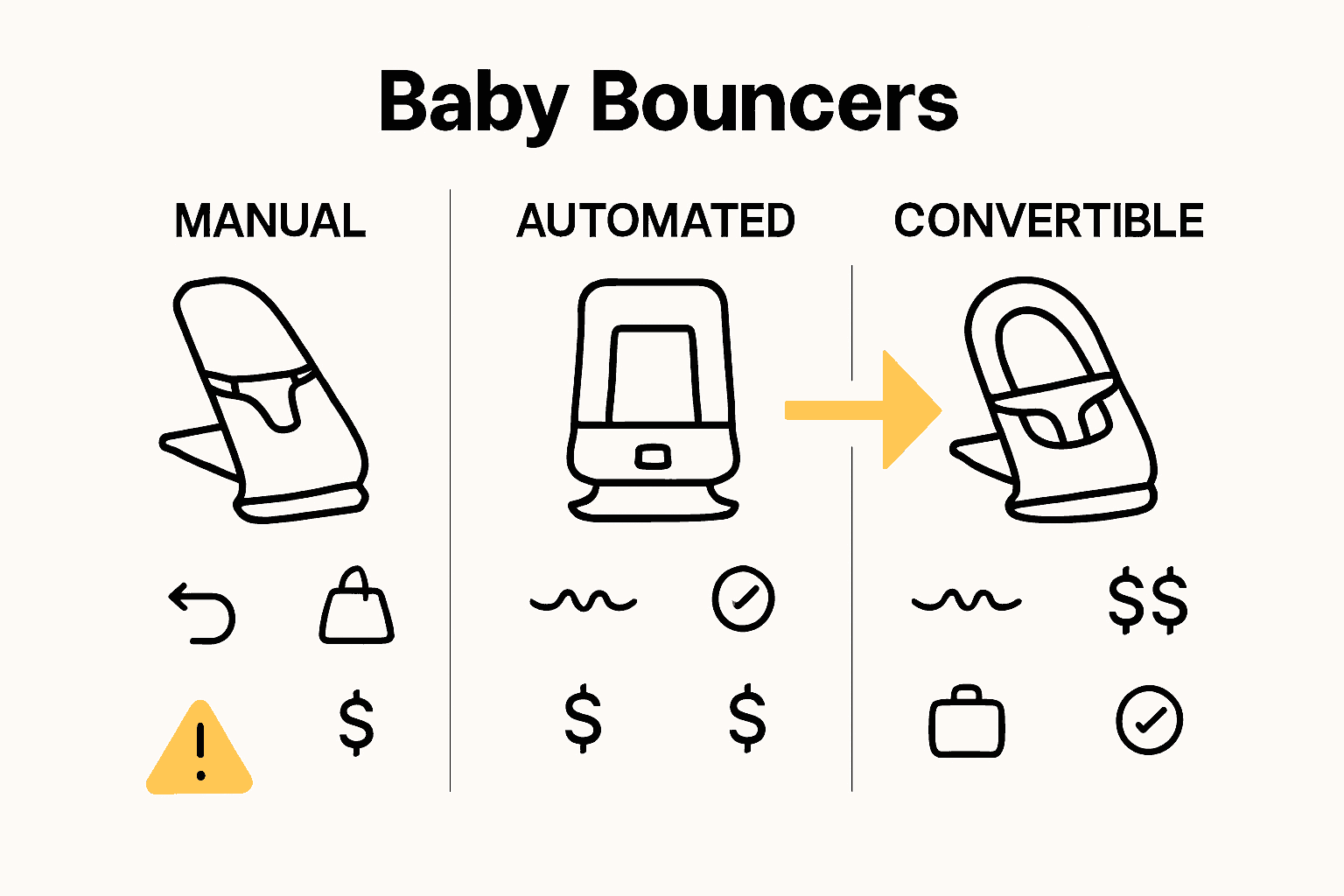 Consumer Reports suggests parents can introduce bouncers during a baby's first weeks, but must carefully monitor usage duration and developmental milestones.
Consumer Reports suggests parents can introduce bouncers during a baby's first weeks, but must carefully monitor usage duration and developmental milestones.
Key usage guidelines include:
- Always place the bouncer on a flat, stable surface
- Never position the bouncer on elevated surfaces like tables or counters
- Use safety harness at all times
- Limit continuous usage to 15-20 minute intervals
- Supervise infant constantly while in the bouncer
The critical developmental window for bouncer usage typically spans from newborn stage to approximately 6 months or when the baby reaches 20 pounds. Parents should watch for these transition signals:
- Baby can sit independently
- Attempts to climb out of the bouncer
- Exceeds manufacturer's recommended weight limit
- Shows increased mobility and curiosity
"A bouncer is a tool, not a babysitter. Active supervision remains paramount." - Pediatric Safety Expert
WebMD emphasizes that prolonged bouncer use can potentially limit an infant's natural movement development. While these devices offer convenience, they should complement—not replace—critical floor time, tummy time, and interactive play experiences that support motor skill progression and muscular strength.
Common Risks and Injury Prevention Tips
Baby bouncers, while convenient, come with potential risks that demand vigilant parental awareness. The Australian Competition and Consumer Commission (ACCC) identifies four primary hazard categories parents must understand: suffocation, falls, strangulation, and tipping.
Suffocation Risks are particularly critical. The Lullaby Trust strongly warns against allowing infants to sleep in bouncers, emphasizing these devices are not safe sleeping environments. Key suffocation prevention strategies include:
- Always keep baby's face clear of fabric or padding
- Ensure proper head positioning
- Never cover the bouncer with blankets
- Transfer sleeping baby to a flat, firm surface immediately
Physical injury prevention requires careful attention to placement and positioning:
- Always place bouncer on low, flat surfaces
- Use safety harness consistently
- Keep bouncer away from hazards like stairs or furniture edges
- Never leave baby unattended
- Stop using when baby shows signs of climbing or exceeding weight limits
"A moment of distraction can lead to a lifetime of regret. Supervision is your most important safety tool." - Child Safety Expert
Additional critical safety considerations include monitoring environmental factors like temperature, ensuring the bouncer is on a stable surface, and recognizing when your baby has outgrown the device. Proactive prevention isn't just about following rules—it's about creating a protective environment that supports your infant's safety and development.
Choosing Certified and Space-Efficient Bouncers
Selecting the right baby bouncer involves balancing safety certification, space efficiency, and practical functionality. Consumer Reports emphasizes the critical importance of purchasing from reputable sellers and verifying compliance with current safety standards.
Certification Checklist for parents includes:
- Current federal safety standard compliance
- Recent product safety testing documentation
- Absence of active product recalls
- Verified manufacturer safety credentials
- Clear weight and age usage guidelines
Space-efficient bouncers require strategic selection, especially for families with limited living areas. Key considerations include:
- Compact folding mechanisms
- Lightweight design
- Minimal footprint
- Versatile positioning options
- Easy storage capabilities
"A great baby bouncer doesn't just protect your child—it adapts to your living environment." - Child Product Safety Expert
The European Standard EN 12790:2009 provides an excellent framework for comprehensive safety evaluation, testing critical elements like:
- Harness strength
- Tip-over resistance
- Locking mechanism durability
- Chemical safety compliance
Ultimately, choosing a certified bouncer means prioritizing your infant's safety while maintaining flexibility for your home's unique spatial constraints. Research, careful comparison, and understanding your specific needs will guide you toward the ideal solution.
Discover Baby Bouncer Safety Solutions Built for Peace of Mind
If you are feeling overwhelmed by complicated safety standards, fall prevention tips, and the challenge of finding a secure bouncer that fits your small space, you are not alone. The article highlights how confusing industry regulations, weight limits, and the need for space-efficient baby gear can leave any parent searching for clarity. At Bouncer Lab, we understand that safety and confidence are top priorities. Our expertly crafted guides break down must-know details about federal regulations, explain restraint systems, and help you identify bouncers that blend reliability with modern, space-saving design.
Instead of spending hours second-guessing your options, visit our in-depth safety reviews. Compare models trusted for both functionality and certified protection. Take action today and give your baby a safer start by exploring Bouncer Lab for updated advice, exclusive insights, and clear product comparisons. Make confident, informed choices now to support your growing family's well-being.
Frequently Asked Questions
What are the safety standards for baby bouncers?
The Consumer Product Safety Commission (CPSC) enforces safety guidelines that include fall prevention, mandatory restraint systems, and weight limits. Manufacturers must comply with ASTM F2167-22 for infant bouncer seat safety, ensuring products can withstand normal use and possible misuse scenarios.
At what age can I start using a baby bouncer for my infant?
Parents can introduce bouncers during the first weeks of life, but usage should generally continue until the baby reaches approximately 6 months of age or about 20 pounds. It's crucial to monitor for developmental signs indicating the baby is ready to transition out of the bouncer.
What risks are associated with using a baby bouncer?
Common risks include suffocation, falls, strangulation, and tipping. To mitigate these risks, always supervise your baby, never leave them unattended, and ensure the bouncer is placed on a stable, flat surface.
How do I choose a safe and space-efficient baby bouncer?
Select a certified bouncer that complies with current safety standards. Consider features like a compact folding mechanism, lightweight design, and minimal footprint to ensure it fits well in your living space while prioritizing safety certifications and functionalities.

